Practical Implementation
In most Montessori institutions, children of three consecutive age groups are combined; this includes children aged 3 to 6, 6 to 9, and 9 to 12, all learning within one collective group. This setup allows for fluid movement among the groups.
An alternative approach could involve creating smaller groups of children who share a similar level of knowledge on certain educational subjects.
For instance, at the Montessori elementary school in Nordheim-Nordhausen, first and third grade, as well as second and fourth grade, are taught together, providing the children with an opportunity to learn from one another. Here, teachers have observed that even when faced with complex tasks, younger students often listen with interest and absorb the content, even if it wasn't initially intended for them.
The Prepared Environment
Since children spend a significant portion of their time in school, it's essential that they feel comfortable in their surroundings. To this end, most schools offer beautifully designed, bright, and welcoming spaces for the children. Light wooden furniture is a common feature, and the ambiance is further enhanced with the addition of plants, aquariums, and terrariums. Carefully designed rooms and well-maintained learning materials encourage the children to treat these resources respectfully.

To foster a sense of belonging, each child should have a personal storage space where they can keep their belongings. There should be ample floor space for children to spread their small rugs or mats as they play and learn. In addition, children should have sufficient space to move around and places to retreat to for quiet activities.
School environments are designed with the children's needs in mind, featuring furniture proportioned to their size, and open shelves at their height, where they can easily access their learning materials. The arrangement and the materials provided stimulate activity and learning.
In the school, different areas are designated for various activities: sensory training, language learning, mathematics, music, cosmic education, and daily life exercises. Learning materials are organized in their respective places on the open shelves, sorted by difficulty. The lack of distracting elements ensures that the children can keep track of their learning process. An orderly external environment contributes to inner order and mental development.
A wide variety of learning materials are provided to meet the diverse needs of all children, from those needing additional support to the gifted ones.
Educational Materials
Katy Wright poses a thought-provoking question: Do children naturally enjoy learning, and if not, could the issue be the learning environment or the method of teaching?

Maria Montessori developed educational materials that are now renowned and utilized far beyond her institutions. Despite their popularity, she did not refer to these materials as toys but as "learning materials," and she coined the term "work" to describe the children's process of discovery. Children take their learning seriously, although they definitely have fun in the process. They enjoy going "to work" in the same way their parents do and feel empowered by this notion.
The Montessori materials are well-conceived, featuring aesthetically pleasing design and engaging functionality. Moreover, they are pleasant to the touch.
Limitations
To manage the learning environment effectively, each material is only available once. This encourages children to negotiate turn-taking and duration of use, promoting patience, cooperation, and consideration. Children also learn to resolve conflicts as disagreements are bound to arise.
Isolation of the Property
It is vital that the learning materials initially present only one dimension to the child. This way, the child can focus on a single concept. For example, there are cylinders of varying sizes, and the child places these cylinders in their respective slots based on size. There are also cylinders with different diameters, introducing another learning dimension. If these different aspects were combined, the child could become overwhelmed. This approach to learning enables the child to accomplish tasks independently and in small, manageable steps.
Even the intricate process of writing is broken down into such incremental stages; the child slowly acquires writing skills. A distinguishing feature of Montessori materials is that there's always an indirect learning goal alongside the direct one.
Isolation in Sports
Interestingly, good sports coaches apply a similar strategy: a beginner learning to serve in tennis practices individual components of the complex process separately, building an understanding of what it means to play tennis. Only after all these steps have been practiced and understood are they combined to form a complete serve.
Error Correction
The primary goal of the Montessori method is to foster independence in the children, enabling them to use and develop their motor and self-teaching skills without constant adult intervention.[1] The learning materials are designed in a way that, after an initial explanation, the child can work with them independently. The child is able to recognize and correct their mistakes, making errors part of the learning process rather than a cause for embarrassment. (see the article "Learning Has to Become Awsome – of Finger Games and Laptops"). They point out where there is still a need for development.
As children grow older and their tasks become more complex, they require increased support from classmates and teachers, often with the aid of solution sheets or calculators.
Presentation
For a child to work independently, either alone or in a group, with the material, an educator must present the material's functionality appropriately. Hence, educators need to acquire skills in material presentation during their training. More importantly, the educator must recognize the right time to introduce the material to the child.
The presentation begins with the educator demonstrating the use of the material, slowly building it up, and explaining what they're doing in a child-friendly manner. After a brief introduction, the educator can silently demonstrate how a task is completed.
Many Montessori learning units proceed in three stages. For instance, if a child is learning the names of different animals, they first observe the toy animal in front of them and hold it. Next, the educator names the animal, like "dog." In the second step, the child is asked to identify the dog among all the animals. In the third step, the child's recall of the animal's name is tested.
If the child struggles with any of the learning steps, it provides an opportunity to revisit and repeat what has been learned.
After the presentation, the educator encourages the child to experiment with the activity independently for as long as they wish - and even to teach it to another child later, if they desire.
For a deeper dive into fascinating learning materials, refer to our comprehensive article titled "Montessori Learning Materials". It features numerous illustrative examples.
How Do Children Learn?
The sheer volume of knowledge children need to acquire becomes evident when considering how our brains learn a motor sequence for every action we undertake. Dr. Steven Hughes, a child neuropsychologist, elucidates this process: "For instance, the brain must memorize how to sit on a chair, a task combining cognitive patterns with motor sequences. Children initially learn these sequences, repeatedly practicing them until they can execute them automatically. Activities like sitting down on a chair eventually become second nature.
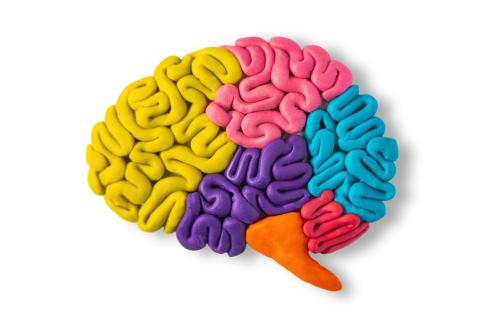
This learning progression is evident when constructing the Pink Tower in Montessori education; initially, the task is challenging, and the child may not successfully stack all the cubes by size. They must first estimate the size of each cube and then use their gross motor skills to build the tower. With practice, the child becomes increasingly adept at this exercise, and the construction of the Pink Tower soon becomes routine and unchallenging due to its familiarity.
Automatized actions hold high value for the brain because it no longer needs to consciously process the activity each time. When driving, for instance, we usually don't actively think about the mechanics of driving because our brain has already mastered it. It becomes automatic.
Hence, a child's brain learns to adapt to various life scenarios. It gradually internalizes what to do in specific situations, effectively molding its behavior. This learning process is highly complex, requiring immense concentration. That's why Dr. Hughes challenges the commonly associated flow state with Montessori education: A person practicing a basic activity is not in flow. Flow only emerges when the activity is mastered, and one no longer needs to actively think about it.
Mental Training
Interestingly, this unrolling of sequences is not unique to children's learning. Elite athletes do the same. In ski jumping, aside from fitness and technique, the primary objective is to memorize a motor sequence as efficiently as possible and reproduce it during competitions. This learning happens during both physical training and mental training. During mental training, the athlete sits in a chair, closes their eyes, and imagines themselves skiing down the hill. At that moment, the exact brain regions responsible for this particular activity are activated. Therefore, it's generally recommended to mentally memorize things to enhance performance. This is why children's daydreams and fantasies are so vital—they could activate brain areas that spark special interests unknown to the child before. Observing older children or adults performing certain activities is also beneficial, activating corresponding areas in the observer's brain.
The Role of the Educator
If the child educates and "shapes" themselves, one might presume an educator is unnecessary. Yet, in Montessori education, the educator assumes a crucial role. They act as a facilitator, enabling the child to learn. They identify when the child is ready for a new experience—recognizing their sensitive phases—and offer the appropriate material. To accomplish this, they should have keen observation skills and ample experience working with children. It's helpful for the educator to note the child's interests from the previous day, the materials they chose, to build upon the following day.
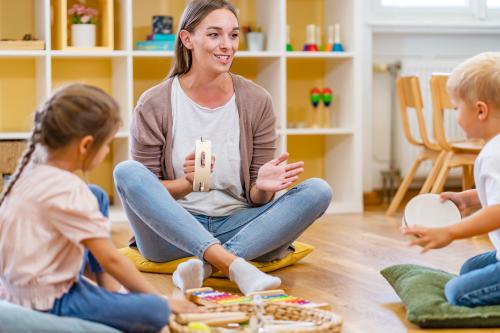
The educator always follows the child's learning pace and curiosity. They don't impose but await the right moment to intervene, such as when explaining how to use a specific tool. As Uwe Kranner, a village school founder and Montessori educator, aptly sums it up: "The educator provides the instructions, outlines the procedure, but does not teach."
Unlike traditional daycare centers, Montessori educators don't take over tasks from children. They only explain when the children request them. If a child demonstrates something to another, adult commentary isn't necessary. However, the adult is always available when needed. They grant the child independence and freedom but ensure it doesn't lead to inactivity unless the child requires rest. The educator always suggests activities when the child seems unsure of what to do next. They accompany hesitant children more closely, introducing them to engaging tasks.
A competent Montessori educator intervenes decisively when children become excessively disruptive, disturbing others' concentration. They also step in when a child procrastinates for an extended period, encouraging them to participate in an enjoyable activity.
To excel in this role, such an educator requires a distinct training approach compared to those working in traditional daycare centers. They need to adopt a different attitude to engage from the child's perspective and communicate at their level. It's crucial for the educator to self-reflect and strive for improvement while treating children with respect. In return, they can expect respect from the children.
As the role of the educator and teacher is entirely different from conventional institutions, Maria Montessori preferred the term "guide." The modern educator is more of a consultant, observer, and companion to the children.
Acquiring Key Competencies
Michael Klein-Landeck and Tanja Pütz, authors of a book on Montessori education, outline the educational goals of the 21st century: independence, personal responsibility, communication and collaboration skills, creativity, problem-solving skills. These skills are precisely what a child acquires in a Montessori institution.

Child neuropsychologist Dr. Steven Hughes cites a survey of 17,000 business leaders across 80 industries in 64 countries, which asked what constitutes a good leader. The respondents' answer pointed towards innovation, analytical thinking, teamwork, creativity, ability to identify opportunities in chaos, ability to handle complexity, and effective communication skills. None mentioned academic success as a prerequisite because excelling at school is essentially a specialized, narrow skill. It doesn't necessarily translate to performing well in other tasks. Grades and academic degrees don't guarantee a good employee. Good grades are merely a byproduct of an efficient, well-functioning brain, says Hughes.
Therefore, Montessori institutions prepare children for life, not exams. They prepare them for real life, where adapting to new situations is a constant requirement. This involves assessing the situation, devising a plan, and executing it. This strategy ensured survival during evolution: each species had to perceive its environment, evaluate sensory information, anticipate outcomes, choose a suitable action, and take action. This process not only illustrates evolution but also the first day at a new daycare center—or the first day as an employee in a Fortune 500 company. Herein lie the oft-mentioned problem-solving skills. As the child continually solves problems while working with the learning material, they become quite proficient at it by the time they reach adulthood.
In Montessori institutions, children learn an essential skill: learning independently, so they can function autonomously as adults. They learn to adapt to ever-changing situations. They don't merely accumulate knowledge; they learn how to apply it. From a young age, they're prepared for a world we can't predict. They learn to reevaluate and potentially perceive things differently as the world changes or as they gain access to new information—this is referred to as inner growth. This growth can occur during various activities, like building a wooden hut together; this presents another avenue for gaining knowledge for future life and learning about teamwork dynamics.
While specific knowledge can always be acquired, fundamental skills should be learned early on. This way, children will adapt well to future work life. Companies now expect not just from managers but all employees a willingness to take responsibility, innovative thinking, initiative, the aforementioned ability to communicate and work in a team, and the capacity to understand connections—most importantly, to apply theoretical knowledge in practice. These are the standard requirements for most employees, and they align with the key competencies that Montessori children acquire from an early age.
Through development material, children learn to complete a task they've started and get accustomed early to handling setbacks. From a Montessori perspective, a setback—whether in building the pink tower or starting a business—is not catastrophic. It's not a final judgment, but merely a step towards success. It prompts one to realize what didn't work and try a different approach next time. If someone focuses too much on the defeat, they are unlikely to solve a problem creatively.
Academic Achievement
Notable Montessori alumni include Jeff Bezos, founder of Amazon; Mark Zuckerberg, founder of Facebook; Larry Page, co-founder of Google; Princes William and Harry; Nobel laureate in literature Gabriel García Márquez; and artist Friedensreich Hundertwasser. But what about the rest? How successful are Montessori students overall?
There are limited studies examining this, but a 2006 study published in the journal "Science" compared the performance of American Montessori students with their counterparts in traditional schools. The study found that after a few years, Montessori students had clear advantages over their peers.
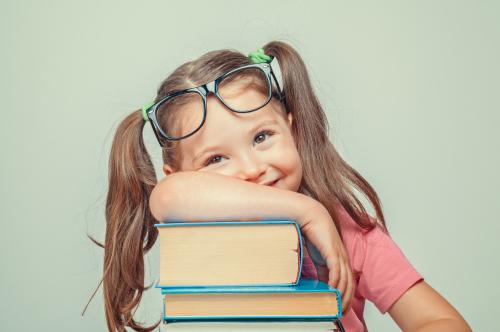
Five-year-old Montessori students outperformed their peers in word recognition and basic math problems. They also showed a higher level of reading and writing fluency by the end of preschool. Additionally, they had superior problem-solving skills, demonstrated greater interest in fairness and justice, and were less likely to fight with each other.
By age 12, Montessori students had comparable knowledge of spelling, punctuation, and grammar to their peers but demonstrated more creativity in their essays, using more complex sentence structures. Additionally, when presented with a hypothetical situation—a party to which they weren't invited—Montessori students were more likely to express disappointment to the host.
The Montessori Comprehensive School in Borken held an alumni gathering where young adults were asked about their school experiences and career trajectories. Many stated that their time at school helped them grow personally and felt like a familial experience. They began their professional lives with a strengthened sense of self-worth and a developed sense of tolerance and calm. They perceived being well-organized as one of their strengths and expressed no hesitation in setting ambitious goals, affirming that "only those who act can achieve."
A former student with disabilities shared his experience of inclusion at school. For him, Montessori was not merely a "block-building school"; it was a crucial time for self-discovery and accepting his handicap. He gained self-confidence and is now proactive in interacting with non-disabled individuals.
However, an alumnus who became an editor stated that he found the teaching insufficient and transferred to a traditional school. His classmate concurred, noting a slower pace in Montessori.
Similarly, Meredith Narrowe shared her decision to switch to a public school at age 10 on the "Montessori Education Podcast." She wanted to meet new people and explore areas she was previously unfamiliar with, such as pop music. After switching, she found the tests and homework—which didn't exist at her Montessori school—a pleasant challenge.
Magdalena Szcześniewska, from the Centrum Edukacji Montessori in Gdynia, acknowledges that Montessori is excellent preparation for future schooling but candidly admits that not every child can write and do math afterward.
Conclusion
Maria Montessori believed that educational mistakes can have significant consequences for a child's life and broader effects on society and the progress of humanity. Thus, parents need to be intentional about how they guide their children and which educational institutions align with their values.
Montessori early education and elementary schools are compelling options. Whether Montessori is the right choice beyond elementary school is a decision parents can contemplate. Despite Montessori's emphasis on fostering independence, parents are still required to reassess every year whether the current school setting is optimal for their child—by observing, accompanying, conversing with, and engaging in joint projects with the child. The ultimate goal is to equip the child with the necessary tools and reinforce their ability to shape their future autonomously.
QUADROssori
A staff member once quipped, "We should really be called QUADROssori." There's truth in that... 😊
QUADRO construction kits, crafted in Germany, are an excellent toy that encourages children to get active. Whether they're improving motor skills through climbing or nurturing creativity by designing their own models, QUADRO construction kits offer endless opportunities. They can be used repeatedly—as a climbing tower, vehicle, or paddling pool, limited only by imagination.
During the miniQuadro pre-construction stage, children can fine-tune their fine motor skills. When assembling the larger QUADRO model, they can exercise their creativity, and then develop their physical fitness, hand-eye coordination, and gross motor skills during climbing and gymnastics with the assembled model.
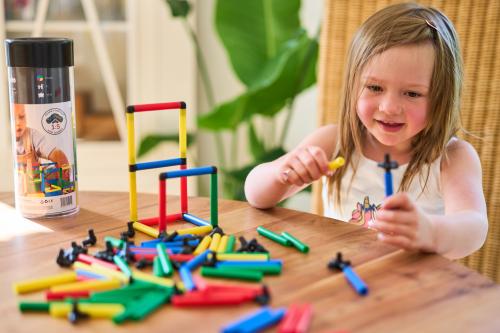
QUADRO is made of high-quality, durable and long-lasting material in Germany and lasts for generations, is therefore also properly sustainable and environmentally friendly (see the article "Built to Be Bought and Then Thrown Away: Planned Obsolescence and Why It Matters").
The QUADRO Learning Tower provides children with a chance to interact at "eye level" with parents, allowing them to participate in kitchen or craft activities. It creates a safe and intriguing world for children to explore, contributing not only to cherished childhood memories but also to the building blocks of self-confidence in later life.
In our series exploring various education models, we will soon feature other school concepts.
In the blog post "Actually, I Really Like School" you will find a story about a democratic school near Hamburg, which shares similarities with Montessori schools.
- [↑] Editor's note: This exploration of education models should not compromise the warmth, affection, parental love, and protection a child experiences. It's solely about nurturing their abilities and bolstering their self-confidence.
Sources
- Michael Klein-Landeck und Tanja Pütz. Montessori-Pädagogik. Einführung in Theorie und Praxis. Verlag Herder, Freiburg im Breisgau 2011
- Hans-Dietrich Raapke. Montessori heute. Eine moderne Pädagogik für Familie, Kindergarten und Schule. Rowohlt Taschenbuch Verlag, Reinbek 2001.
- Alexandre Mourot (Regisseur). Das Prinzip Montessori. Die Lust am Selber-Lernen. Film, 2018
- Angeline Lillard und Nicole Else-Quest. The Early Years. Evaluating Montessori Education. Science, 2006
- Research shows benefits of Montessori education. The Guardian, 26.09.2006
- #2 La pedagogie Montessori. Papier Crayon, 05.07.2018.
- Montessori Deutschland,16.11.22
- Montessori Teil 1. Abteilung Bildungsforschung HHU, 18.11.2016
- Montessori Teil 2. Abteilung Bildungsforschung HHU, 18.11.2016
- Nasze PRZEDSZKOLE Montessori w CHINACH. Damian Chen, 23.01.2022
- Löffel, Papierflieger und eine Vision – die Montessori-Schule in Halle (Saale). MontessoriHalle.
- Montessoripädagogik | Was Schule von Montessori lernen kann. SmartWärts, 27.09.2020
- Nauka liter, szorstki alfabet Montessori, lekcja trójstopniowa, Centrum Edukacji Montessori, 10.02.2022
- Nauka części mowy w systemie Montessori – spójnik. Centrum Edukacji Montessori, 13.02.2022
- Praca z kartami trójdzielnymi Montessori. Centrum Edukacji Montessori, 15.02.2022
- Materiał Montessori. Centrum Edukacji Montessori, 08.12.2020
- Montessori Kinderhaus - Tagesablauf in einem Montessori Kinderhaus. Österreichische Montessori-Akademie, 05.10.2018
- Montessori = creativity unleashed. Judi Bauerlein. TEDxLivermore, 26.01.2015
- Montessori Material – der Rosa Turm. Österreichische Montessori-Akademie, 27.11.2018
- Tablica dzielenia. Polskie Centrum Montessori, 25.06.2020
- Does Montessori School Make A Difference? Montessori Education, 29.10.2019
- Greensboro Montessori School hosts Dr. Steven Hughes. Greensboro Montessori School, 03.03.2018
- Goldene Perlen – Einführung, d'Insle Montessori, 15.04.2020
- Senior School | 5 ways the Montessori method helps our teenagers. MelbourneMontessoriOfficial, 16.09.2015
- Fakty i mity na temat pedagogiki Montessori. Centrum Edukacji Montessori, 08.12.2020
- Gesprächsrunde Ehemalige Montessori. donnerTV / MEDIA TV- & Filmproduktion
- You Might Be A Montessorian. Katy Wright. TEDxCarrollCollege, 04.06.2020
- Une journée à la Maison des Enfants Montessori du Pré-Saint-Gervais et de Montreuil (93). Maison des Enfants Montessori, 16.04.2013
- ENQUETE : ECOLE MONTESSORI. Canal Pourpre, 09.12.2014
- Kritische Fragen zum Thema Montessori. BildungsTV, 27.08.2013
- 10 THINGS I DON'T BUY AS A MONTESSORI PARENT. Hapa Family, 06.01.2022
- What Happens *After* Montessori? Montessori Education, 29.03.2019
- Dorfschule Montessorihaus - Montessoripädagogik in der Praxis. Spiel Räume, 15.02.2015
- Montessori-Diplomkurs / Bindi-Kurs Wiesbaden 2015. Montessori Stiftung Berlin, 27.01.2016
- Montessori Material – Multiplikationsbrett.Reformpädagogik Montessori, 13.04.2020
- Technology (Grey Areas in Montessori). Montessori Education, 09.07.2019
- Montessori Grundschule Nordheim-Nordhausen - Imagefilm. Michael Köhler, 18.05.2019
- Discovering a natural way to learn. Karin Ann. TEDxHongKongED, 21.07.2014
- Montessori-Material: Entwicklungsmaterial vs. Spielzeug. Montessori-Material: Entwicklungsmaterial vs. Spielzeug, 21.10.2018
- Montessori-Darbietung: Die geometrischen Körper. Österreichische Montessori-Akademie, 03.04.2022
- Montessori-Pädagogik: Und die Neurowissenschaften. Österreichische Montessori-Akademie, 09.11.2018.
- Montessori-Darbietung: Wie gut, dass sich die Erde dreht. Österreichische Montessori-Akademie, 17.04.2022
- Montessori-Darbietung: Ziffern und Chips. Österreichische Montessori-Akademie, 20.03.2022
- Montessori-Material: Das Hunderterbrett. Österreichische Montessori-Akademie, 11.12.2018
- Poetus. Zitate für Freunde
- Aphorismen.de Aphorismen, Zitate, Sprüche und Gedichte.
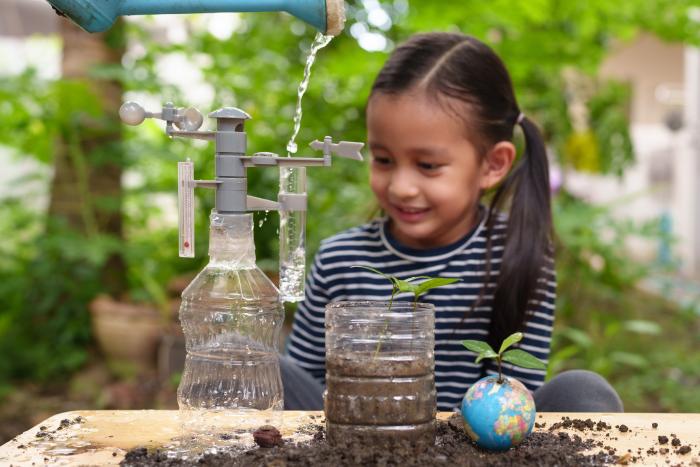
Comments